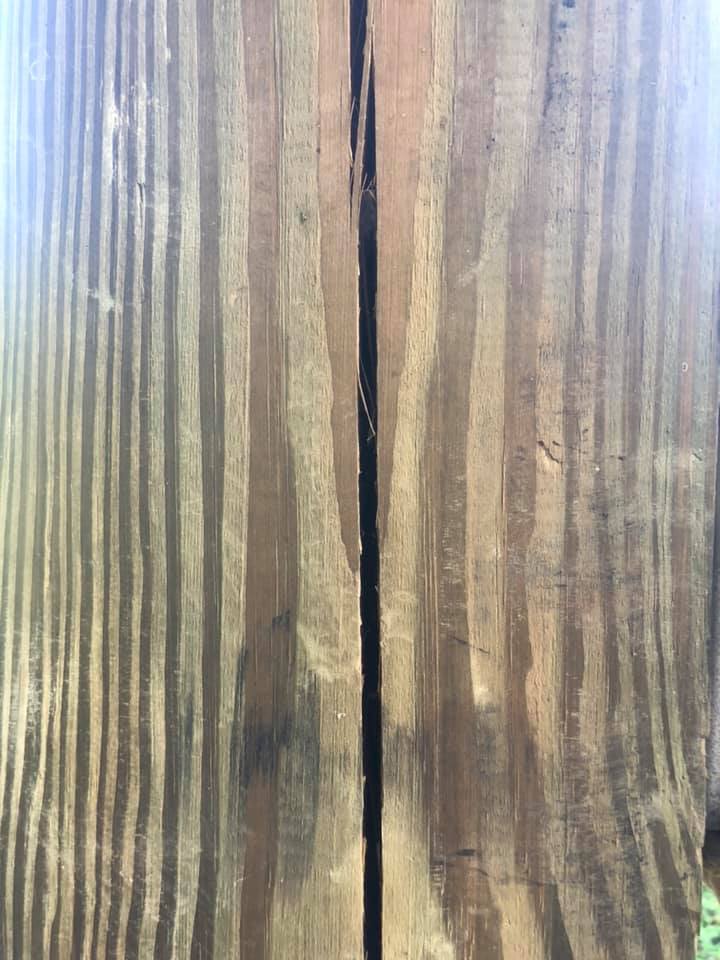Checks and Splits in Post Frame Timbers

Checks and splits in post frame timbers (wall columns) are often misunderstood when assessing a structure’s condition. There are two means where checks and splits can form in wood elements: during seasoning, or drying, and during manufacture.
Development of checks and splits after installation occurs after wall columns have dried in place. Usually these were installed green, especially after a recent pressure preservative treatment. Due to their size, it’s not practical for timbers to be kiln dried. Some are air dried for a period of time prior to installation, but mostly they are installed green, and therefore, are allowed to dry in place.
During the seasoning process, stresses develop in wood as a result of differential shrinkage often leading to checking, splitting and even warping. Wood fiber separation results in checking and splitting. Due to innate wood characteristics, it shrinks and swells differently. Generally wood shrinks (or swells) approximately twice as much tangentially to annual rings as compared to radially. Additionally, during initial drying process timber outside inevitably dries quicker than interior, causing differential stresses to develop.
Combined effects of these drying stresses in a post often, and sometimes inevitably, result in formation of a check or a split. Since wood’s weakest strength property is tension perpendicular to grain (similar to how wood is split with an ax), drying stresses can result in a check or split forming in a radial direction across annual rings. However, while these seasoning characteristics may initially appear as problematic, they likely are not. It is important to remember as wood dries, it becomes stronger. Furthermore, the development of these seasoning characteristics is, quite often, normal. Most importantly, both are accounted for in derivation of design values for timbers and are also accounted for in applicable grade rules.
A check is separation in wood fibers across annual rings of a piece of wood and a split is a separation of wood fibers across annual rings but through a piece of wood. A third type of fiber separation, known as a shake, occurs along annual rings and is generally a naturally occurring phenomenon in standing trees, not a result of seasoning. There are several types of checks and splits defined and handled in grading rules for timbers.
In evaluation of post frame timber columns normal checks and splits can often be interpreted as problematic by some design professionals with respect to allowable design values. However, in most cases they are not. There are instances, however, where a check or split may reveal an important issue or a problem. For example, a relatively large split across a severe slope of grain.
Still concerned? In many locations glu-laminated post frame building columns are available, usually at a slight premium. Individual members of glulams have been dried prior to fabrication and pose little chance of checks or splits.






